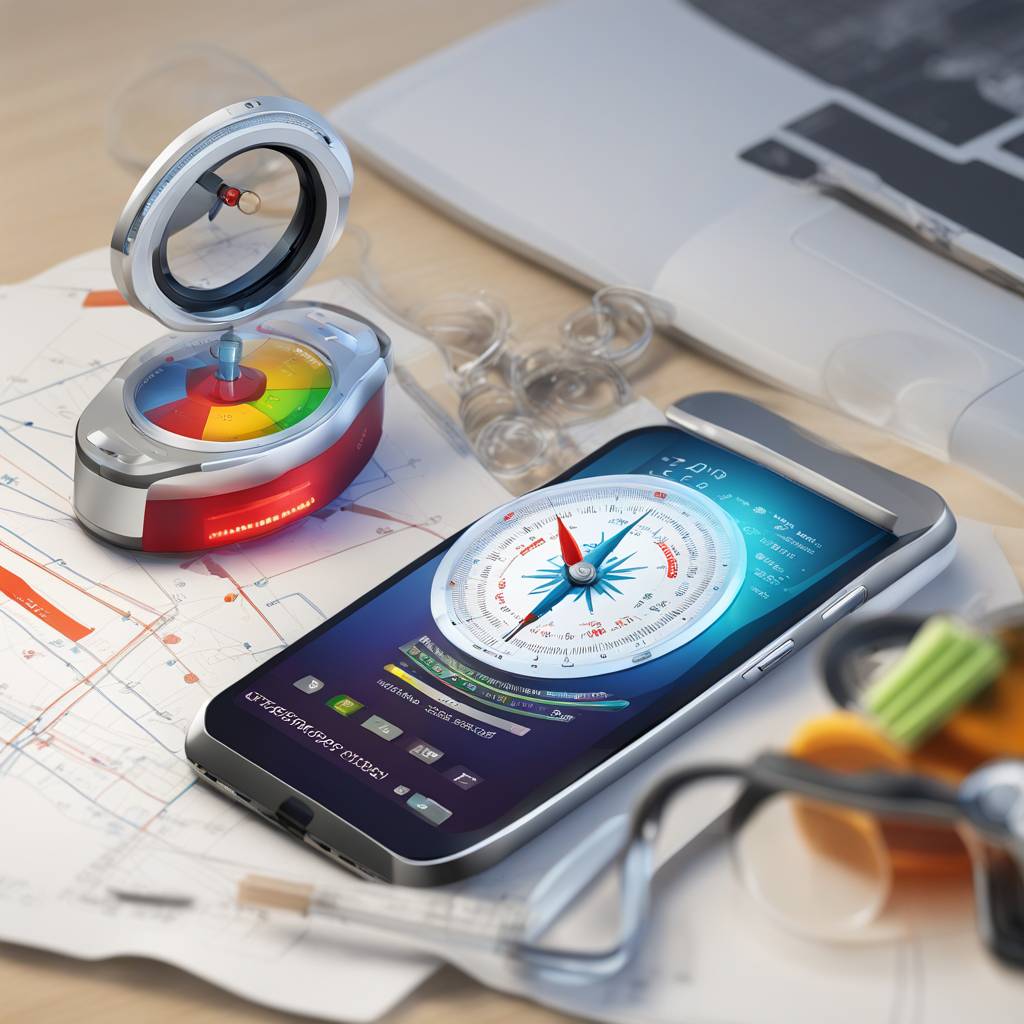A team of researchers at the National Institute of Standards and Technology (NIST) has developed a technique that uses an ordinary cellphone magnetometer for measuring the concentration of glucose, a marker for diabetes. By utilizing the magnetometer in conjunction with magnetic materials that respond to biological or environmental cues, the method has the potential to measure a variety of biomedical properties and detect environmental toxins. This innovative approach could revolutionize the field of diagnostics by enabling rapid, accurate, and inexpensive testing for a range of health conditions.
In their proof-of-concept study, the researchers attached a small well containing the solution to be tested and a strip of hydrogel to a cellphone. The hydrogel contained embedded magnetic particles that react to changes in glucose concentration or pH levels by expanding or contracting. As the hydrogel changed shape, it moved the magnetic particles closer to or farther from the cellphone’s magnetometer, which detected corresponding changes in the magnetic field strength. This allowed the researchers to measure glucose concentrations as small as a few millionths of a mole, demonstrating the high sensitivity of the method.
Engineered hydrogels are cost-effective and versatile materials that can be tailored to detect various compounds of interest. By stacking layers of different hydrogels that respond to different stimuli, the researchers were able to amplify the signal detected by the magnetometer, making it easier to track changes in magnetic field strength. This approach could be used to detect DNA strands, specific proteins, histamines, and other compounds involved in the body’s immune response at concentrations as low as a few tens of nanomoles, offering a significant improvement in diagnostic capabilities.
The use of a cellphone magnetometer for measuring pH levels with high sensitivity could have widespread applications, from home brewing and baking to environmental monitoring. By providing accurate pH measurements at a fraction of the cost of traditional benchtop meters, this approach could empower individuals and professionals alike to make informed decisions about their craft or environmental samples. Furthermore, the simplicity and portability of the method make it an attractive option for conducting testing in resource-limited settings, where access to sophisticated laboratory equipment may be limited.
In order to bring this technology to market, engineers will need to focus on scaling up the production of hydrogel test strips and ensuring their long shelf life. Additionally, efforts to improve the speed of the hydrogel’s response to environmental cues could further enhance the efficiency of measurements. By addressing these challenges and optimizing the performance of the system, the researchers aim to make this innovative diagnostic approach widely accessible and applicable across various fields. The potential for using cellphone magnetometers to conduct rapid, sensitive, and cost-effective testing opens up new possibilities for personalized medicine, environmental monitoring, and scientific research.


